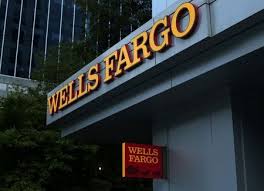Inside Wells Fargo’s Plan to Fix Its Culture Post-Scandal

When news of the Wells Fargo fake-accounts scandal broke this past September, the company’s stock responded as it had for much of the year: It rose.
A U.S. congressman would soon label the bank “a criminal enterprise,” late-night television hosts would bash it mercilessly, and plaintiffs would file lawsuits that the company recently estimated could cost it billions of dollars. Yet on that Thursday in September—as one of the stranger and more outrageous banking scandals in memory was being revealed to the world—Wells Fargo’s share price ticked merrily upward.
Investors merely yawned at the revelation that its employees had created as many as 2.1 million phony deposit and credit card accounts for unwitting customers—a “widespread illegal practice,” in the words of the Consumer Financial Protection Bureau, that provoked that government regulator to slam the bank with its largest-ever penalty, a $ 100 million fine; the bank also paid $ 85 million to settle with the Los Angeles City Attorney and the Office of the Comptroller of the Currency. Wall Street analysts were as nonplussed as investors; none of the 30-plus sages who cover the company—No. 25 on this year’s Fortune 500—issued any urgent reassessments. Even three weeks later, with little break in the scalding headlines, John Stumpf, then Wells Fargo’s CEO, was calmly telling a House committee that the scandal was “absolutely immaterial.”
In a narrow sense, he was right. The company would go on to earn $ 5.3 billion in the quarter following the scandal—and another $ 5.5 billion in the most recent period, ending in March—keeping intact a prodigious earnings streak that now runs to 18 consecutive quarters of profit above $ 5 billion, a feat achieved only by one other company in recent history: Apple. Last year, Wells Fargo was the fourth-most-profitable company overall, trailing only Apple, JPMorgan Chase, and Berkshire Hathaway.
Bank deposits are up significantly, reaching an all-time high of $ 1.3 trillion. And the company’s stock has blithely followed suit, climbing 20% from its fleeting dip in October. So, yes, with the exception of the exit of Stumpf himself (who abruptly retired in October), an outsider would be hard-pressed to see any signs of “material” fallout from ghost-account-gate.
As former COO Tim Sloan, who replaced his old boss as CEO, told Fortune in May: “If we were to dial the time machine back to the summer of last year and say, ‘This is what’s going to happen to Wells Fargo over the next six months: Could Wells Fargo continue to generate over $ 5 billion of earnings [per quarter]?’ I think it would be reasonable for people to say, ‘Well, that’s not gonna happen.’ But look what’s happened.”
Indeed.
And yet, as Sloan candidly attests, there was significant fallout from the scandal. Wells Fargo faces a lingering cost that the quarterly numbers don’t reveal. “From a reputational standpoint—how our customers feel about us, our team members, how other stakeholders feel about us—there was clearly some impact,” says Sloan, a soft-spoken 57-year-old Michigander who, before joining the C-suite, worked on the business-banking side of the company. Data backs him up. Perennially ranked by its corporate peers as one of the World’s Most Admired Companies (it was No. 25 on Fortune’s 2016 roster of all-stars), Wells Fargo didn’t make the list at all this year. Likewise, the bank’s ranking in Harris Poll’s latest survey of corporate reputations among the general public has plunged from 70th to 99th place among the 100 “most visible” companies, above only Takata, whose defective airbags have been implicate d in several deaths, according to the U.S. government. It’s “the largest drop ever measured” in the reputation poll’s 18-year history, Harris says. Some cities, moreover, have deemed Wells Fargo so toxic these days that they have said they’ll refrain from conducting new business with the bank.
As this story was closing in early June, a federal judge in San Francisco was reviewing—and looked likely to approve—Wells Fargo’s proposed $ 142 million settlement of a class-action lawsuit brought by consumers over the phony accounts. Additional cases, including lawsuits brought by Wells Fargo employees, shareholders, and others, remain unresolved and could prove expensive. The company’s latest estimates of “reasonably possible” litigation losses range as high as $ 2 billion. Compounding the risk, federal and state prosecutors have been asking the company for information and could still decide to bring criminal charges. All of this continues to hang over the 165-year-old stagecoach company and could further tarnish its once-wholesome reputation.
One measure of that concern—hollow though it may seem—was the shareholder vote at the company’s annual meeting in April, where several directors barely managed reelection despite the bank’s enviable profit streak. Chairman Steve Sanger received only 56% of the vote. “When you get just over half the vote and you’re running unopposed, something is wrong,” says Charles Elson, a Wells Fargo shareholder and director of the University of Delaware’s John L. Weinberg Center for Corporate Governance. “The board needs to be refreshed. Everybody who’s been there more than five or 10 years should go.”
Sloan, to his credit, has taken on the challenge with gravity and even some urgency. “We’re focused on remediating and fixing everything that we’ve broken, and then also building a better company over time,” he tells Fortune, emphasizing that the first task on that list is to rebuild trust with employees and customers: “It’s much more important for us to make sure we’ve got the right team members in place, motivating that team, and creating that culture than it is for us to focus first on our investors,” he says. At least for now, Wells Fargo’s biggest and most famous shareholder, Warren Buffett, has declared his faith in the company, with Buffett’s Berkshire Hathaway apparently holding on to most of its 500 million shares.
Key to fixing Wells Fargo is understanding how it got broken in the first place. “How could it be such a successful bank and get into such deep trouble?” asks Harvard Business School professor Bill George, a Goldman Sachs director, former Medtronic CEO, and Wells Fargo customer and shareholder. How could so many smart people have been so wrong for so long?
It’s a critically important question, and Fortune spent several months trying to shed some light on the answer. The ending for this case study has yet to be written and may not be for some time. But the story so far does offer some sobering takeaways.
One of those is a lesson for every company. Harvard’s Bill George sums it up well: “No one can say this can’t happen to us.”
Every tale of corporate scandal begins with culture—and Wells Fargo’s culture, at least in one prominent segment of the company’s business, made it the kind of place where frontline employees could feel ungoverned and libertine enough to fabricate millions of customer accounts. It also created an environment where such behavior could be concealed, minimized, and willfully ignored by high er-ups. But the story is hardly that simple. The culture’s worst features were also, in their more benign forms, key to the bank’s knockout success, transforming it from America’s No. 9 bank in the late 1990s, operating mostly in California, to the country’s most valuable bank for a time—and even, in 2015, the most valuable bank on earth, ahead of Industrial and Commercial Bank of China. Today it’s No. 2 globally, behind only JPMorgan Chase.
That dichotomy wasn’t everywhere at Wells Fargo—but it was central to the ethos at the company’s retail banking unit, known internally as the Community Bank, which is the company’s biggest, most profitable segment as well as its public face.
Leaders there didn’t think of themselves as bankers providing services but rather as retailers selling products, and they “regularly likened the retail bank to nonbank retailers,” says the investigation report of a special committee set up by Wells Fargo’s board in the wake of the scandal. For example, the bank’s branches weren’t called “branches”; they were “stores.” When employee turnover reached 41% in one 12-month period—worryingly high for a bank—managers reasoned that the number was normal for a retailer and thus no cause for concern. But high turnover meant many employees were extremely inexperienced—which became a compounding problem when it came to hawking additional banking services to customers.
“Cross-selling,” it’s called, and virtually all banks want to do more of it. Once a customer opens a checking or savings account, maybe he or she would also like an auto loan or overdraft protection or a credit card. The more products a customer has with a bank, the more money the bank makes and the less likely the customer is to leave. That’s why all banks cross-sell. But arguably no bank has ever done it with the fevered intensity of Wells Fargo.
The obsession with cross-selling dates back to Wells Fargo’s 1998 acquisition by Minneapolis-based Norwest, whose CEO, Richard Kovacevich, adopted the more prestigious Wells Fargo name for the merged business. He urged employees to “Go for Gr-eight,” achieving an average of eight banking products per customer. This seemed an insanely ambitious goal; at most banks the average was two or three. But Kovacevich stuck with it. So did Stumpf, a Norwest banker who ran the retail bank before succeeding Kovacevich as CEO. And so did Carrie Tolstedt, another Norwest banker whom Stumpf considered “the best banker in America.” She ran the retail bank from 2007 until the company announced her retirement at age 56, six weeks before the scandal became public. “Go for Gr-eight” remained the retail bank’s stated goal until last year. One result of this hard-charging sales culture was that Wells Fargo became the envy of the industry, achieving towering dominance in products per customer: an unheard-of 6.1, vs. an industry average of 2.7. Bankers everywhere wondered how they did it.
Every managerial program has a life span. Employees eventually figure out how to game the program, or the environment changes and it no longer serves a useful purpose, or it accomplishes all it can accomplish. All those things happened with “Go for Gr-eight.” But senior leaders seemed oblivious to these limits, and as the program intensified over many years, they did little to rein it in. Whenever a note of caution rang, the company’s Kafkaesque bureaucracy stifled effective action.
An early warning appeared in the spring of 2002, when practically all the employees of a Colorado branch jointly gamed the program in an effort to meet sales goals, including by issuing debit cards that customers didn’t ask for. The board report explains that firing everyone as required by federal law would have left the branch virtually empty, so Wells Fargo arranged a regulatory exception that allowed some lower-level workers to stay. Everyone else in the branch retired or was terminated.
Such behavior—opening accounts or issuing products that customers didn’t ask for—was and is against the rules at Wells Fargo, and when the bank found employees doing so, as it increasingly did after 2002, it would fire them. Senior leaders believed they were thus addressing the problem. But unethical employees weren’t the cause of the dysfunction; they were mostly an effect of it. The problem was targets that couldn’t possibly be met and a high-pressure sales culture that made the typical car dealership seem like a meditation retreat.
Many sales organizations report results every month or week. Wells Fargo branch managers in some regions had to report sales data every hour in calls with district managers. Branch managers therefore leaned heavily on their staff to sell. Even tellers were supposed to sell products, in some cases at least 100 per quarter. Individual employees were constantly and publicly ranked against one another, as were branches, districts, and regions. At every level, from tellers up through district managers and their bosses, those who beat sales targets were celebrated, and those who didn’t were publicly humiliated, sometimes demoted, and occasionally fired.
Training in “questionable sales practices was required or you were to be fired,” a former employee tells Fortune. “We were constantly told we would end up working for McDonald’s” for not meeting quotas, a former branch manager told the Los Angeles Times in 2013; another former branch manager said employees “talked a homeless woman into opening six checking and savings accounts with fees totaling $ 39 a month.” That newspaper article sparked an investigation by the Office of the Los Angeles City Attorney, leading eventually to the actions brought by that office and the others that were settled last September.
“Managers constantly hound, berate, demean, and threaten employees to meet these unreachable quotas,” the Los Angeles suit alleged. “Managers often tell employees to do whatever it takes to reach their quotas. Employees who do not reach their quotas are often required to work hours beyond their typical work schedule without being compensated for that extra work time, and/or are threatened with termination.”
The message was clear to everyone in the retail bank: “The route to success was selling more than your peers,” the board’s investigation found—not profitability or customer satisfaction, but simply selling more products to each customer. Everyone knew the goals were sheer fantasy for many branches and employees. At some branches not enough customers walked in the door, or area residents were too poor to need more than a few banking products. Bank leaders called overall quotas “50/50 plans” because they figured only half the regions could meet them. Yet no excuses were tolerated. You met the quotas or paid a price.
The predictable result: fake accounts. Employees began issuing unrequested credit cards to existing customers or opening additional deposit accounts with fake email addresses (such as “noname@wellsfargo.com”) so the customer would never know. A slightly safer tactic was to open ghost accounts for friends and family. The board’s investigation found a branch manager who had a teenage daughter with 24 accounts, an adult daughter with 18 accounts, a husband with 21 accounts, a brother with 14 accounts, and a father with four accounts.
That was more than bad enough, but an even worse cultural problem was what happened higher up: nothing. Or at least nothing effective. As signs of trouble mounted alarmingly for years, top leaders consistently underreacted. The reasons were several, none of them unique to Wells Fargo or to banking.
Ever since the Norwest takeover, the company had maintained a strong tradition of deference to the leaders of each business unit, who were urged to “run it like you own it.” Kovacevich called himself a “CEO of CEOs.” The theory was that everything, including risk management, worked better when decisions were made closer to the cu stomer. Tolstedt, the retail banking head, was therefore expected to take full charge of any problems in her business, and the guiding standard of deference meant she was not pushed hard on the phony-accounts problem until late in the game.
That culture proved particularly troublesome with Tolstedt at the helm because she was “insular and defensive and did not like to be challenged or hear negative information,” the board’s investigation concluded. “Even senior leaders within the Community Bank were frequently afraid of or discouraged from airing contrary views.” (Tolstedt has not spoken publicly since leaving the bank, and she did not respond to an interview request from Fortune conveyed through her lawyer. When the board issued its findings, her lawyer said, “We strongly disagree with the report and its attempt to lay blame with Ms. Tolstedt. A full and fair examination of the facts will produce a different conclusion.”)
Compounding the problem was a dysfunctional second line of defense: a corporate bureaucracy so sprawling that all its elements could plausibly evade full responsibility for the scandal. For example, the corporate chief risk officer had no authority over the retail bank’s risk officer, who reported only to Tolstedt. The HR department regarded employee bad behavior as an issue of training, incentive compensation, and performance management. The internal investigations and audit department looked for problems but didn’t propose solutions; ditto the sales and service conduct oversight team. The law department’s employment section focused mainly on litigation risks from firing employees.
These are only a minor fraction of the individuals, offices, committees, boards, departments, groups, task forces, and teams that examined sales problems in the retail bank. Each concerned itself with its assigned slice of the issue; no one looked for the root cause or envisioned big-picture consequences. “Bureaucracies love to lie to themselves,” says University of Michigan leadership authority Noel Tichy. “The hardest thing is to get a bureaucracy to be honest.”
At the top of this bureaucracy was Stumpf, whose tepid response to information that should have triggered loud alarms is one of the most striking features of the scandal.
Internally reported cases of sales gaming rose from 63 in 2000 to about 680 in 2004. In the second quarter of 2007, company bosses received 288 allegations of employee sales misconduct; that figure soared to 1,469 in the fourth quarter of 2013. Yet when Stumpf was told that the retail bank was firing 1% of its employees every year for sales integrity violations, he saw it as excellent news because it showed that 99% were following the rules. He reiterated the point in an email to Sloan: “Do you know only around 1% of our people lose their jobs [for] gaming the system, and about 2/3 of those are for gaming the monitoring of the system, i.e. changing phone numbers, etc. Nothing could be further from the truth on forcing products on customers. In any case, right will win and we are right. Did some do things wrong—you bet and that is called life. This is not systemic.” (Stumpf, through his lawyer, declined a request for an interview.)
Just as Stumpf and nearly everyone else focused too narrowly when looking inward (“This is not systemic”), they also focused too narrowly when looking outward. They figured, correctly but narrowly, that direct financial harm to customers from sales gaming in the form of unwarranted fees and penalties was insignificant in Wells Fargo’s overall results. But no one seems to have envisioned the reputational threat—specifically, to have imagined how news media and social media would react to the words “2 million fake accounts.”
Which brings us to Sept. 8, 2016, when Wells Fargo announced it would pay $ 185 million to the City of Los Angeles, the Consumer Financial Protection Bureau, and the Office of the Comptroller of the Currency. The public response quickly made clear how badly the bank’s leaders had underestimated that announcement’s effect—even if shareholders were still mostly unalarmed.
As Senate and House committees sum moned Stumpf to testify, executives and directors switched into crisis mode. “Tim [Sloan] really stepped up and grabbed the company by the collar even before John’s fate was determined,” notes David Carroll, who runs the company’s wealth and investment management business. Within five days the company announced that all sales goals at the retail bank would be eliminated. By September’s end, the board had clawed back $ 19 million worth of stock awards to Tolstedt, denied her severance pay or a 2016 bonus, and determined that she should be fired for cause. It also rescinded—reportedly at the CEO’s own request—$ 41 million of unvested stock for Stumpf, who stepped down from his roles as chairman and chief executive on Oct. 12.
With the board’s explicit support, Sloan has since made broad organizational changes that are the infrastructure for culture change. Even before the scandal became public (but while the settlements were being negotiated), he had orchestrated Tolstedt’s retirement and her replacement by Mary Mack, who was running the brokerage business and who had come to Wells Fargo in its 2008 takeover of Wachovia. On Jan. 1 he instituted a new incentive compensation plan in the retail bank that pays employees on the basis of customer satisfaction and achievement of team goals, among other measures, but not product sales goals. The branches aren’t “stores” anymore; they’re branches. No one in the company gets evaluated on products per customer, and after almost 20 years, the company no longer reports that number to investors.
Repairing a critical structural error, Sloan has fully centralized the risk and HR functions, so the leaders of those departments in the business units now report to their corporate chiefs without even a dotted line to the business unit head. He consolidated much of the vast risk-control bureaucracy into a new office of ethics, oversight, and integrity, accountable to the board’s risk committee. In February the board fired four more retail bank executives for cause, and in April it clawed back an additional $ 47 million of Tolstedt’s pay and an additional $ 28 million of Stumpf’s.
All of that needed doing before Sloan could finally start the culture-change project in earnest. He knows that culture doesn’t come from policy; it comes from leaders’ day-to-day behavior, and it cascades. What will he ask of his direct reports? Who will get promoted? How will frontline workers be evaluated, promoted, paid? Crucially important: What will happen when an employee calls the ethics hotline?
“With 269,000 employees, it’s inevitable that there are some who will lie, cheat, and steal,” says the University of Michigan’s Tichy. “The question is what the leaders will do to discourage it, discover it, and deal with it.” Every employee will be watching for the answers.
In trying to change its culture, Wells Fargo holds an advantage over most big, old, successful companies. As an amalgam of many banks, it doesn’t have a deeply rooted, oak-strong culture like, say, General Motors had when CEO Mary Barra launched her culture-change effort after the 2014 ignition-switch scandal. With Norwesters Stumpf and Tolstedt gone, and the main elements of the Norwest model—extreme decentralization and “Go for Gr-eight”—purged, Sloan faces an opportunity to create something new: a strong, companywide, uniquely Wells Fargo culture.
It can’t happen quickly. “It takes years to behave your way out of a problem like this, to become the company you dream of becoming,” says Douglas Conant, who transformed Campbell Soup’s culture and rescued the company in the early 2000s. Wells Fargo today doesn’t need rescuing, just fixing—and it needs someone to instill the right culture. If Sloan remains CEO until he’s 65, and remembers that culture is what he’s creating with his every act every day for the next eight years, he could do it.
A version of this article appears in the June 15, 2017 issue of Fortune with the headline “Can Wells Fargo Get Well?”.



